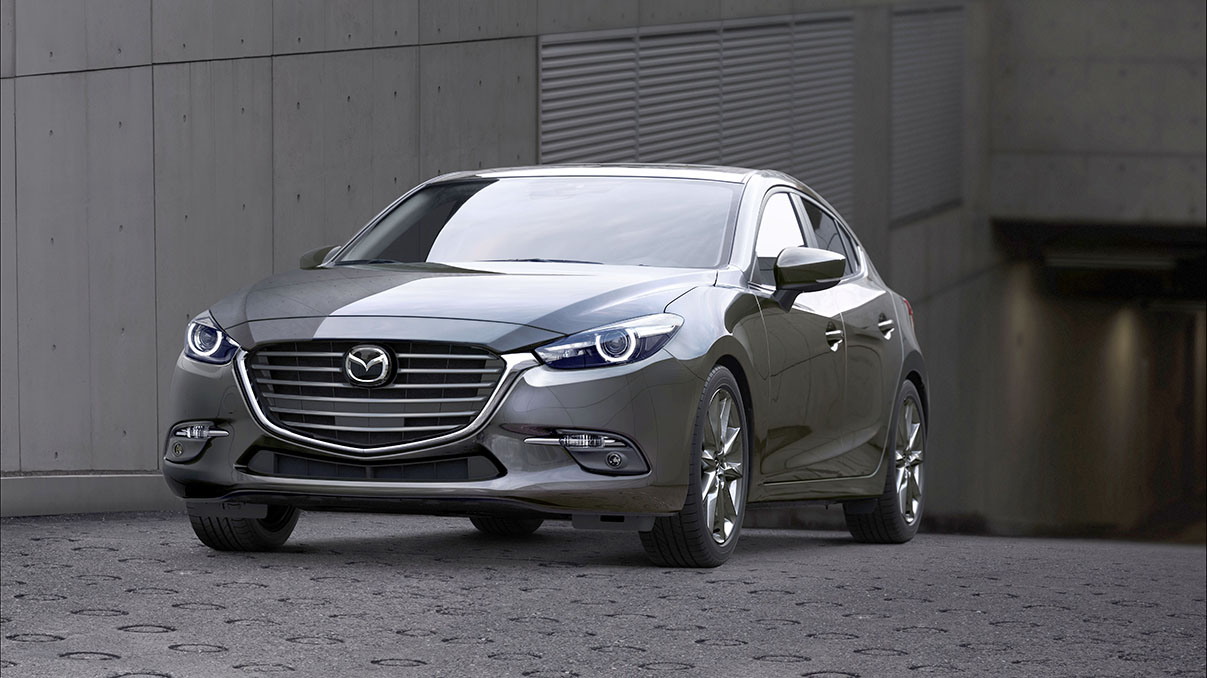
The Mazda3 debuted in 2013 as the third model to join Mazda’s new-generation product lineup. Their aim with it as “The Mazda” was to embody the Mazda spirit in the most widely sold model the brand offers. With its unique appeal based on Mazda’s human-centred design philosophy, the Mazda3 assumed its role as a core model for the global market that would lead the way toward the evolution and advancement of the Mazda brand. Highly acclaimed, especially for its impressive design and excellent handling, the Mazda3 was selected as one of the top-three finalists for both the 2014 World Car of the Year and World Car Design of the Year awards. Our primary theme for this, the model’s first major update, was to heighten the Jinba Ittai driving experience.
Mazda wishes to create a presence that turns the car into the customer’s trusted life partner, rather than serve as a mode of conveyance. The updated Mazda3 embodies all the latest points of appeal that Mazda has to offer, as befits its nickname, “The Mazda.” The brand's true wish is that this earns it a place in the hearts of customers and becomes a valuable presence in their lives.
For the 2018 year, the Mazda 3 remained mostly the same with only a few modifications to features and options packages.
Progression of the Jinba-Ittai philosophy
Mazda aims to offer vehicles that provide driving pleasure and enrich the lives of their owners. They have achieved this through the pursuit of Jinba-Ittai, a feeling of unity between driver and vehicle. GVC is the first technology within SKYACTIV-VEHICLE DYNAMICS, and is part of the SKYACTIV series of technologies. SKYACTIV-VEHICLE DYNAMICS was conceived to integrate control of the engine, transmission, chassis and body to enhance the car’s Jinba-Ittai feel; a sense of connectedness between car and driver that differentiates Mazda vehicles from others.
Enhancing chassis performance using the SKYACTIV engine
GVC is only possible thanks to the existence of SKYACTIV engines, which enable precise control of drive torque, and the SKYACTIVCHASSIS, which facilitates ideal vehicle behaviour. GVC maximizes tire performance by focusing on the vertical load on the tires. The moment the driver starts to turn the steering wheel, GVC controls engine drive torque to generate a deceleration G-force, thereby shifting load to the front wheels. This increases front-wheel tire grip, enhancing the vehicle’s turn-in responsiveness. Thereafter, when the driver maintains a constant steering angle, GVC immediately recovers engine drive torque, which transfers load to the rear wheels, enhancing vehicle stability. This series of load transfers extracts much more grip from the front and rear tires, improving vehicle responsiveness and stability according to the driver's intentions.
A natural control effect based on a human-centered development philosophy
Mazda studied the biomechanical relationship between the human and a vehicle in operation in order to tune the system to maximize a smooth interaction. The reaction rate and amount of control has been aligned with human sensibilities.
Confidence increases as the car behaves more in line with driver expectations
The driver operates the steering wheel to keep the vehicle within its lane whether driving in a straight line or cornering. However, due to irregularities and undulations in the road surface, the car does not always travel along the expected line, forcing the driver to make corrections with the steering wheel.
- Mazda Media

